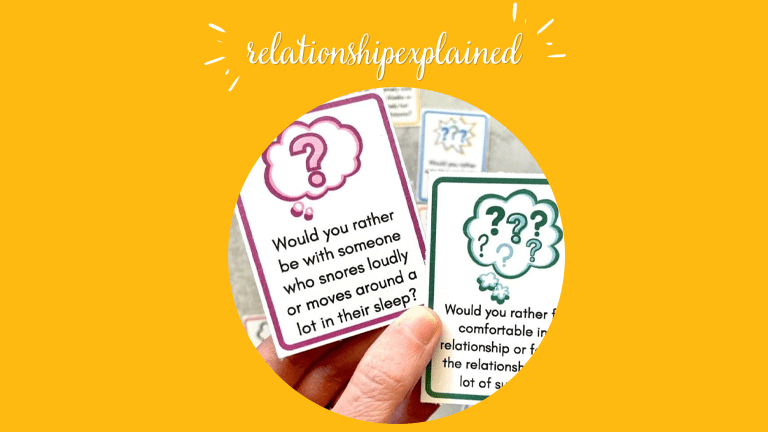How Far Away Is Too Far For A Relationship
The distance considered "too far" for a relationship varies based on individual preferences and circumstances. Maintaining open communication, setting realistic expectations, planning visits, and utilizing technology can help manage a long-distance relationship. Ultimately, success depends on the commitment and willingness of both partners to make it work.
In the realm of relationships, the concept of distance can pose significant challenges that require thoughtful consideration.The question of how far is too far for a relationship requires a deeper exploration into the dynamics of emotional connection and physical proximity. In addition, their impact on the foundation of a partnership needs to be carefully considered. It is a topic that forces us to confront the realities of sacrifices, longing, and the complexities of maintaining intimacy across great distances.
In this discussion, we will delve into the question of how far is too far for a relationship and explore practical strategies to navigate such circumstances. We understand the complexities and the emotional toll distance can have on relationships, and our aim is to provide insights and guidance on how to address these challenges head-on.
When A Long-Distance Relationship May Be Too Far To Manage
1. Limited Opportunity For Physical Intimacy
In long-distance relationships, one of the primary challenges is the limited opportunity for physical intimacy compared to couples residing in the same city. The physical aspect of a relationship is a fundamental element that allows couples to connect, express love, and strengthen their bond. It encompasses gestures like hugging, holding hands, and engaging in intimate moments together.
While emotional intimacy can be nurtured through various means, the absence of physical presence can create a longing for touch and closeness. When a person is too far away from their partner to meet their need for physical connection, handling the relationship may be difficult.
2. Communication Challenges
Communication challenges are prevalent in long-distance relationships, especially when partners are separated by the furthest distance. In the era of technology, various modern communication platforms like messaging apps, video calls, and social media can help bridge the gap. However, factors such as time zone differences and language barriers can still pose significant obstacles.
Long-distance relationships often require partners to navigate different time zones, which can make finding convenient communication windows a challenge. Dating websites and applications often allow users to set preferences such as a specific location radius. But it is crucial to consider the practicalities of sustaining a relationship within that radius, as frequent travel may still be required.
3. Financial Constraints
Financial constraints can significantly impact these relationships. Unlike a regular relationship where partners in close proximity can spend time together without incurring substantial expenses, the distance between individuals in a long-distance relationship often necessitates frequent travel. The costs associated with transportation, accommodation, and other expenses can accumulate quickly.
Even if the distance seems relatively short, such as within 30 miles, the expenses of commuting regularly can strain finances. Dating apps may have connected individuals from different areas, but when connecting with the right person who is miles away poses financial challenges, it may not be an ideal relationship.
4. Other Responsibilities
Limited quality time together is a common challenge, particularly prominent for younger people who are still building their careers or education. Balancing responsibilities and commitments can result in infrequent visits, leaving them with only a few precious moments to spend together every few months. The scarcity of face-to-face time can make it difficult to create meaningful memories, develop shared experiences, and deepen the connection.
5. Emotional Strain
Emotional strain can be a significant challenge in long-distance relationships, especially when partners are separated by country or state borders. Such situations can intensify the longing for closeness, leading to heightened emotional stress. In the early stages of a relationship, the emotional strain can be particularly impactful as partners are still building trust and solidifying their connection.
6. Trust Issues
Trust issues can arise in long-distance relationships, regardless of whether it involves a new partner or a couple transitioning from the same city to a long-distance arrangement. Distance can make it challenging to gauge each other's actions, intentions, and level of commitment, which can trigger insecurities and doubts.
Building trust requires open and honest communication, transparency, and consistent reassurance. It becomes even more crucial in the context of a long-distance relationship, where two-thirds of the relationship relies on trust without the ability to physically observe each other's behaviors. Most people in such situations may find the relationship too difficult to maintain.
7. Different Social Circles
Different social circles can present a unique challenge in long-distance relationships, regardless of the distance involved, including relationships across state borders. While it's natural for individuals to have separate social lives, physical distance can amplify the sense of detachment from each other's social circles.
Partners may miss out on shared experiences, mutual friends, and the feeling of being integrated into each other's lives. This can lead to a sense of isolation and a disconnect from each other's day-to-day activities.
8. Uncertain Future Plans
Uncertain future plans can be a common source of anxiety and stress in long-distance relationships. The reality of not knowing when or how the distance will be overcome can create doubts about the longevity of the relationship. Most people crave stability and a clear path forward in life, but in a long-distance scenario, the future may seem uncertain.
Questions about eventual reunification, career choices, or the possibility of moving to be with the partner can loom large, adding pressure and complicating decision-making. Balancing personal aspirations with the desire to be with one's partner can be a constant struggle.
9. Limited Support System
A limited support system is a challenge faced by individuals in long-distance relationships, as they may lack the physical presence of their partner during difficult moments. When partners are on the other side of a state border or even farther apart, seeking immediate emotional support may not always be feasible. For most people, the inability to rely on their partner can leave them feeling isolated or disconnected, and such a relationship may not hold much value.
10. Change In Priorities
Change in priorities is a natural occurrence that can impact long-distance relationships. As individuals grow and evolve, their personal goals and aspirations may shift, leading to a reevaluation of what they want in life.
This introspection can be particularly pronounced in long-distance relationships where partners may have limited time together, such as only seeing each other on weekends or for short moments. Over time, the realization may happen that the physical distance and sacrifices required to sustain the relationship no longer align with their changing priorities.
How To Deal With Such A Situation
1. Open And Honest Communication
Open and honest communication is paramount in handling a long-distance relationship that is too far away. No matter the distance between partners, openly expressing thoughts, feelings, and concerns creates a foundation of trust and understanding.
In a dating scenario where partners are in different cities, it becomes even more crucial to maintain effective communication to bridge the geographical gap. Sharing daily experiences, discussing challenges, and expressing desires and needs helps ensure both individuals feel heard and supported.
2. Trust Building
Building trust is a vital aspect of navigating a long-distance relationship that is too far away. It requires consistent effort and actions to establish and nurture trust over time. Communication is key; openly sharing thoughts and feelings creates a safe space for both partners to connect on a deeper level.
Remaining reliable and true to commitments, even when miles apart, builds confidence and reassurance. Trust-building activities, such as setting aside dedicated time to connect, sharing intimate details, and being emotionally present, help strengthen the bond.
3. Establish Clear Expectations
Establishing clear expectations is crucial when managing a long-distance relationship that is too far away. Both partners should engage in open and honest conversations to define the parameters of the relationship. Discussing topics like commitment level, communication frequency, future plans, and how to navigate challenges together lays a foundation for a healthy and sustainable connection.
Setting clear goals for the short term and the long run allows partners to align their efforts and work towards a shared vision. With each date, hour, and moment spent talking about expectations, the relationship becomes more grounded and has a higher chance of success in the face of distance.
4. Utilize Technology
In today's digital age, technology has become an invaluable tool for handling a long-distance relationship that is too far away. Communication platforms, video calls, and messaging apps bridge the physical gap, allowing partners to connect despite the distance. Half a world away or just a few states apart, technology brings hope and keeps the relationship alive.
Sharing daily activities through pictures, videos, or voice messages helps create a sense of involvement and closeness. Virtual date nights, online games, or even watching movies together remotely can keep the spark alive. Staying interested in each other's lives and utilizing technology creatively helps maintain the connection until the day when partners can finally share a house together.
5. Plan Visits
Planning visits is an essential aspect of managing a long-distance relationship that is too far away. While it may require financial resources, prioritizing and budgeting for regular visits can strengthen the bond. Finding a balance that matches both partners' financial situations is crucial. Older people, in particular, may have more established careers and financial stability, but it's still important to consider budgetary limits.
6. Engage In Shared Activities
Engaging in shared activities is a key strategy for managing a long-distance relationship that is too far away. While distance can create limitations, finding activities that match both partners' interests and budgetary limits is crucial. Money should not be a barrier to experiencing shared moments.
Couples can explore free or low-cost activities such as taking virtual classes together, playing online games, or watching movies simultaneously. Engaging in hobbies or interests that can be pursued individually yet discussed and shared creates a sense of connection.
7. Support Each Other's Independence
Supporting each other's independence is a vital aspect of managing a long-distance relationship that is too far away. While physical distance may limit day-to-day interactions, it is crucial to respect each other's individuality and personal pursuits.
Encouraging and empowering partners to pursue their goals, interests, and passions allows them to grow as individuals. In a long-distance scenario, supporting each other's independence is like sharing the passenger seat of a car, allowing both partners to navigate their individual journeys while remaining connected.
8. Prioritize Emotional Support
Prioritizing emotional support is crucial in managing a long-distance relationship that is too far away. When partners are hours away from each other, it becomes essential to actively provide comfort and understanding. Regularly talking about emotions, fears, and challenges creates a safe space for both individuals to express themselves. Being attentive and empathetic during difficult moments helps strengthen the emotional connection. Setting aside dedicated time to listen, offer advice, and provide reassurance is vital.
9. Have A Shared Vision
Having a shared vision is crucial for navigating a long-distance relationship that may be too far away. Partners must engage in open conversations and explore their long-term aspirations. Discussing topics such as eventual relocation, career plans, or even marriage helps align expectations.
Talking about the future allows both individuals to assess their compatibility and search for common ground. Setting aside dedicated time, like a weekend getaway or a special occasion, to have these discussions can foster a deeper understanding of each other's desires and goals.
Final Thoughts
The question of how far away is too far for a relationship does not have a definitive answer. It ultimately depends on the individuals involved and their unique circumstances. However, with open communication, trust-building, regular visits, shared activities, and a shared vision, it is possible to handle a long-distance relationship that is deemed too far away.
It's important not to forget that distance should not hinder the fun and enjoyment of the relationship. Writing a clear plan, making informed decisions, and prioritizing what both partners prefer can guide them in finding the best way to navigate the challenges and create a fulfilling connection.













